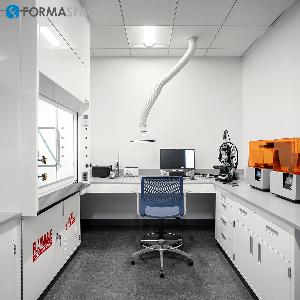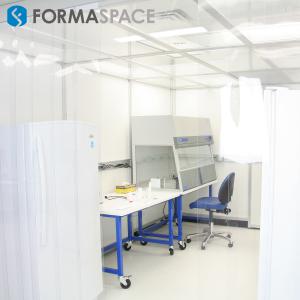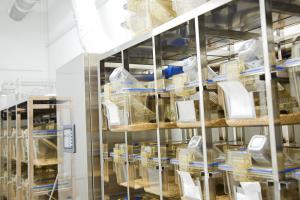
How to Prevent Accidental Exposure and Cross-Contamination When Using Biosafety Cabinets
According to the CDC, bacteria are responsible for more than 40% of laboratory-acquired infections.
AUSTIN, TX, USA, October 21, 2019 /EINPresswire.com/ -- Failure to establish a culture of safety in laboratories handling biospecimens can have real-world consequences — the increased risk of serious laboratory-acquired infections (LAIs).According to the CDC’s MMWR reports, laboratory workers handling blood products are infected with Hepatitis B at a rate that is 2 to 4 times that of the general population. Lab workers also report higher rates of exposure to Hepatitis C and human immunodeficiency virus (HIV).
According to the CDC, bacteria are responsible for more than 40% of laboratory-acquired infections. More than 37 different bacteria species have been identified as common etiologic agents in the lab — the most common are Brucella species, Shigella species, Salmonella species, Mycobacterium tuberculosis, and Neisseria meningitidis.
If you have not done so already, it’s time to identify a Laboratory Biosafety Officer to help establish an effective safety culture at your facility — and to establish protocols to conform with the relevant CLIA safety regulations 493.1101 (d), 493.1407 (e) (2), and 1445 (e) (2).
We take a look at some of the key safety ‘takeaways’ that will keep your staff safer as well as reduce the chance of inadvertent cross-contamination that could imperil the accuracy and reproducibility of your lab experiments and test procedures.
According to the CDC, the five most prominent sources of laboratory-acquired infections are:
1. Accidental Inoculation By Syringe Needles Or Contaminated Sharps.
NOTE: Punctures and cuts from so-called sharps, such as needle sticks, broken pipettes, and glass slides, can lead to dangerous Laboratory-Acquired Infections (LAIs). Always have a designated procedure for handling sharps, a place to safely dispose of them, and an appropriate emergency medical protocol to follow immediately after a known or suspected incident.
2. Spills And Splashes On The Skin Or Mucous Membranes.
NOTE: When it comes to spills, a disorganized workspace or unfamiliarity with handling items while wearing personal protective equipment (PPE) can be just as dangerous as moving too quickly or not paying close attention. Implosion accidents are another risk; these can occur when vacuum flasks or bell jars fail, resulting in sharp debris from broken glass shooting out into a laboratory technician’s unprotected eyes, face, or hands. Finally, explosions in the laboratory can be caused by multiple factors, including the mishandling of liquid gases (such as liquid nitrogen, helium or oxygen) in cryogenic containers, or the accidental mixing of incompatible compounds due to handling errors caused by mislabeled or LASA (look-alike, sound-alike) compounds.
3. Ingestion Or Exposure By Mouth Pipetting Or Touching The Mouth Or Eyes With Fingers Or Contaminated Objects.
NOTE: Ingestion of chemicals or biological pathogens can occur due to incorrect specimen procedures, such as mouth pipetting, allowing food and beverages in the lab, absentmindedly placing a pen or pencil in the mouth, wearing contact lenses, or using your keyboard or smartphone in the laboratory without a protective cover.
4. Laboratory Research Activities Involving Animal Bites Or Scratches.
NOTE: Facilities that handle live test specimens (e.g. vivarium research facilities) should refer to “Section V—Vertebrate Animal Biosafety Level Criteria for Vivarium Research Facilities” in the Biosafety in Microbiological and Biomedical Laboratories document cited above as well as Chapter 6. Laboratory Animal Facilities from the World Health Organization (WHO) Laboratory Biosafety Manual – Third Edition.
5. Inhalation Of Infectious Aerosols.
NOTE: Inhalation of aerosols, including fungus spores, micro particulates, viruses, or bacteria, can be caused by improper fume hood use, unsafe centrifuge handling procedures, opening closed test tubes at close range without proper PPE (personal protective equipment), or mistakes in handling vacuum pumps safely.
Formaspace provides durable, task-specific laboratory furniture solutions to meet a variety of research and testing needs. Formaspace is the world’s largest manufacturer of custom laboratory furniture solutions. Our design and engineering teams are known for delivering unique, collaborative solutions on time and budget. Click here to choose the best option that describes your lab environment and contact us to connect with a laboratory furniture design expert!
Here’s a little thought experiment.
If you were an athlete preparing for a game, wouldn’t you warm up on the field first by stretching and practicing some of your key movements?
What if you were giving an important presentation… wouldn’t you practice your presentation first before ‘going live’?
Why not apply the same approach to your work in the laboratory?
Read more ... https://formaspace.com/articles/wet-lab/using-bio-safety-cabinets/?utm_source=einpresswire&utm_medium=content&utm_campaign=article-101619
Mehmet Atesoglu
Formaspace
22792792
email us here
EIN Presswire does not exercise editorial control over third-party content provided, uploaded, published, or distributed by users of EIN Presswire. We are a distributor, not a publisher, of 3rd party content. Such content may contain the views, opinions, statements, offers, and other material of the respective users, suppliers, participants, or authors.






